National Football League
This page lists of the various symbols in the National Football League group.

The National Football League (NFL) is a professional American football league consisting of 32 teams, divided equally between the National Football Conference (NFC) and the American Football Conference (AFC). The NFL is one of the four major professional sports leagues in North America, and the highest professional level of American football in the world. The NFL's 17-week regular season runs from the week after Labor Day to the week after Christmas, with each team playing 16 games and having one bye week. Following the conclusion of the regular season, six teams from each conference (four division winners and two wild card teams) advance to the playoffs, a single-elimination tournament culminating in the Super Bowl, played between the champions of the NFC and AFC.
Symbols in this group:
Atlanta Falcons Logo
When the team debuted in 1966, the Falcons wore red helmets with a black falcon crest logo. In the center of the helmet was a center black stripe surrounded by two gold stripes and two white stripes. These colors represented the two college rival schools in the state of Georgia; rival schools Georgia Tech Yellow Jackets (White and Gold) and the Georgia Bulldogs (Red and Black). Although the gold was later taken out, the white remains to this day. They wore white pants and either black or white jerseys. At first, the falcon crest logo was also put on the jersey sleeves, but it was replaced by a red and white stripe pattern four years later. They switched from black to red jerseys in 1971, and the club began to wear silver pants in 1978.
A prototype white helmet was developed for the team prior to the 1974 season but was never worn.
In 1990, the uniform design changed to black helmets, silver pants, and either black or white jerseys. The numbers on the white jerseys were black, but wer
Baltimore Ravens Logo
The team's first helmet logo, used from 1996 through 1998, featured raven wings outspread from a shield displaying a letter B framed by the word Ravens overhead and a cross bottony underneath. The US Fourth Circuit Court of Appeals affirmed a jury verdict that the logo infringed on a copyright retained by Frederick E. Bouchat, an amateur artist and security guard in Maryland, but that he was entitled to only three dollars in damages from the NFL.
Buffalo Bills Logo
The Bills' uniforms in its first two seasons were based on those of the Detroit Lions at the time. The team's original colors were Honolulu blue, silver and white, and the helmets were silver with no striping. There was no logo on the helmet, which displayed the players' numbers on each side.
Carolina Panthers Logo
The shape of the Panthers logo was designed to mimic the outline of both North Carolina and South Carolina.The Panthers changed their logo and logotype in 2012, the first such change in team history. According to the team, the changes were designed to give their logo an "aggressive, contemporary look" as well to give it a more three-dimensional feel. The primary tweaks were made in the eye and mouth, where the features, particularly the muscular brow and fangs, are more pronounced, creating a more menacing look. The revised logo has a darker shade of blue over the black logo, compared to the old design, which had teal on top of black.
Chicago Bears Logo
The club's first logo was introduced in the early 1950s as a black bear on top of a football. They kept this until 1962, when the Bears trademark 'C' logo was first introduced.
Cincinnati Bengals Logo
When the team debuted in 1968, the Bengals' uniforms were modeled after the Cleveland Browns. When Paul Brown was fired by Art Modell, Brown still owned the equipment used by Cleveland. So after the firing, Paul Brown packed up all his equipment, which he then used for his new team in Cincinnati. The Cleveland Browns' team colors were brown, orange, and white, then they changed to white, black, and orange, and their helmets were solid orange with a white dorsal stripe over the crest.
The Bengals' team colors were orange, black, and white, and their helmets were a similar shade of orange, with the only variations being the word "Bengals" in block letters on either side of the helmet and no stripe on the helmet. The Cincinnati Bengals were unique in the NFL as they did not have uniform numbers on the players sleeves until the 1980 season. The team did not discard their Cleveland-like uniforms until 1981. During that year, a then-unique uniform design was introduced. Although the team ke
Cleveland Browns Logo
The Browns are the only National Football League team without a helmet logo. The logoless helmet serves as the Browns' official logo. The organization has used several promotional logos throughout the years; players' numbers were painted on the helmets from the 1957 to 1960; and an unused "CB" logo
was created in 1965, But for much of their history, the Browns' helmets have been an unadorned burnt orange color with a top stripe of dark brown (officially called "seal brown") divided by a white stripe.
Dallas Cowboys Logo
The Dallas Cowboys' blue star logo–representative of Texas as "The Lone Star State"–is one of the best known team logos in professional sports. The blue star originally was a solid shape until a white line and blue border was added in 1964. The logo has remained the same since. Today, the blue star has been extended to not only the Dallas Cowboys, but owner Jerry Jones' AFL team, the Dallas Desperados that have a similar logo based on the Cowboys. The blue star also is used on other entries like an imaging facility and storage facility.
Denver Broncos Logo
When the Broncos debuted in 1960, their original uniforms drew as much attention as their play on the field. They featured white and mustard yellow jerseys, with contrasting brown helmets, brown pants and vertically striped socks. Two years later, the team unveiled a new logo featuring a bucking horse, and changed their team colors to orange, royal blue and white. The 1962 uniform consisted of white pants, orange helmets, and either orange or white jerseys.
Detroit Lions Logo
Aside from a brief change to maroon in 1948 instituted by then head coach Bo McMillin (influenced by his years as coach at Indiana), the Lions uniforms have basically remained the same since the team debuted in 1930. The design consists of silver helmets, silver pants, and either blue or white jerseys.
Edmonton Oilers Logo
The original 1972 design featured the now-traditional colours of blue and orange, but reversed from their more familiar appearance in later seasons, orange being the dominant colour and blue used for the trimming. For the first few games of the 1972 season, player names were not displayed on the uniform; rather the word "ALBERTA" was written in that space. About halfway through the season, though, the player names made their appearance, since the Oilers had played exclusively in Edmonton. These jerseys also featured the player numbers high on the shoulders, rather than on the upper sleeve.
In the 1975–76 season, the jersey was changed to a blue base with orange trim. The logo that appeared on programs and promotional material remained the same. However, the logo that appeared on the home jersey had a white oil drop, on a dark orange field, with the team name written in deep blue. The away jersey featured an orange-printed logo.
When the team joined the NHL in 1979, the alternate logo
Green Bay Packers Logo
Needing to outfit his new squad, team founder Curly Lambeau solicited funds from his employer, the Indian Packing Company. He was given $500 for uniforms and equipment in return for the team being named for its sponsor. An early newspaper article referred to the fledglings as "the Indians", but by the time they played their first game "Packers" had taken hold.
Indian Packing was purchased in 1920 by the Acme Packing Company. Acme continued to support the team, which played its first NFL season with "ACME PACKERS" emblazoned on its jerseys.
Houston Texans Logo
Along with the team name, McNair also unveiled the team logo, an abstract depiction of a bull's head, split in such a way to resemble the flag of Texas and the state of Texas, including a lone star to stand for the eye, the five points of which representing pride, courage, strength, tradition and independence. McNair described the colors as "Deep Steel Blue", "Battle Red" and "Liberty White". A year later the Texans unveiled their uniforms during another downtown rally.
Indianapolis Colts Logo
The Colts' helmets in 1953 were white with a blue stripe. In 1954–55 they were blue with a white stripe and a pair of horseshoes at the rear of the helmet. For 1956 the colors were reversed. white helmet, blue stripe and horseshoes at the rear. In 1957 the horseshoes moved to their current location, one per side The blue jerseys have white shoulder stripes while the white jerseys have blue stripes. The team also wears white pants with blue stripes down the sides.
Jacksonville Jaguars Logo
The day after the NFL awarded the expansion team to Jacksonville, a triumphant Wayne Weaver held up the Jaguars' proposed silver helmet and teal jersey at the NFL owners' meeting in Chicago. The team's colors were to be teal, gold, and silver with black accents. However, this jersey and helmet design, with a gold leaping jaguar, created controversy. Ford Motor Company, then-parent of the automaker Jaguar, believed that the Jaguars' logo bore too much resemblance to the automaker's logo. Though no lawsuit was brought to trial, lawyers from the team and the automaker negotiated an ultimately amicable agreement whereby Jaguar would be named the official car of the Jaguars, and the Jaguars would redesign their uniforms.
Kansas City Chiefs Logo
When the Texans began playing in 1960, the team's logo consisted of the state of Texas in white with a yellow star marking the location of the city of Dallas. Originally, Hunt chose Columbia blue and orange for the Texans' uniforms, but Bud Adams chose Columbia blue and scarlet for his Houston Oilers franchise.
Hunt reverted to red and gold for the Texans' uniforms, which even after the team relocated to Kansas City, remain as the franchise's colors to this day.
The state of Texas on the team's helmet was replaced by an arrowhead design originally sketched by Lamar Hunt on a napkin. Hunt's inspiration for the interlocking "KC" design was the "SF" inside of an oval on the San Francisco 49ers helmets. Unlike the 49ers' logo, Kansas City's overlapping initials appear inside a white arrowhead instead of an oval and are surrounded by a thin black outline. From 1960 to 1973, the Chiefs had grey facemask bars on their helmets, but changed to white bars in 1974, making them one of the first t
Los Angeles Rams Logo
The Rams were the first NFL team to have a logo on their helmets. Ever since halfback Fred Gehrke, who worked as a commercial artist in off-seasons, painted ram horns on the team's leather helmets in 1948, the logo has been the club's trademark.
When the team debuted in 1937, the Rams' colors were red and black, featuring red helmets, black uniforms with red shoulders and sleeves, tan pants, and red socks with black and white stripes. One year later they would switch their team colors to gold and royal blue, with gold helmets, white pants, royal blue uniforms with gold numbers and gold shoulders, white pants with a royal stripe, and solid royal blue socks. By the mid-1940s the Rams had adopted gold jerseys (with navy blue serif numerals, navy blue shoulders, gold helmets, white pants with a gold-navy-gold stripe, and gold socks with two navy stripes). The uniforms were unchanged as the team moved to Los Angeles. The helmets were changed to navy in 1947. When Gehrke introduced the horn
Miami Dolphins Logo
The Dolphins logo and uniforms remained fairly consistent from the team's founding through 2012. The team's colors were originally aqua and orange, with the original logo consisted of a sunburst with a leaping dolphin wearing a football helmet bearing the letter M. At their debut in 1966, the dolphin's head was near the center of the sunburst. By 1974, the dolphin's body was centered on the sunburst. The uniforms featured white pants with aqua and orange stripes, paired with either a white or aqua jersey. On the white jersey, aqua block numbers and names were outlined in orange, with aqua and orange sleeve stripes. These uniforms were used as the primary uniforms for road games and daytime home games, due to the extreme heat of South Florida. The team also had an aqua jersey used mainly for night home games or road games in which the opponent chose to wear white. The aqua jersey featured white block numbers and names with an orange outline, and orange and white sleeve stripes.
Minnesota Vikings Logo
From the team's debut in 1961 to 1995, the Vikings' logos and uniforms essentially remained the same. Reflecting Minnesota's Scandinavian cultural heritage, one of the team's two primary logos consists of a profile of a blond norseman, while the other consists of a white Viking horn.
The team's helmet is purple with a Viking horn logo on each side. Each horn is outlined in gold. The horn logo was slightly revised in 2006. The original uniform design consisted of white pants, gold trim, and either purple or white jerseys. From 1962 to 1964, the Vikings wore purple pants with their white jerseys (The Vikings, with their new uniform, still wear, on occasion, purple pants with yellow and white trim). In a design that was unique among American football teams, the white jerseys had a completely different stripe pattern, which was over the shoulders, than the purple ones, which was around the sleeve cuff. These unique shoulder stripes on the white jerseys did not appear until 1969, the year
New England Patriots Logo
The Patriots original logo was a simple tricorner hat, used only for the 1960 season. From 1961 to 1992, the Patriots used a logo of a Revolutionary War minuteman hiking a football. Oddly, the Patriots script logo during this time consisted of a western-style font. The minuteman logo became known as the "Pat Patriot" logo, which later became the name of the team's mascot.
New Orleans Saints Logo
Black, along with old gold and white, has always been one of the team colors, but it wasn't the first choice of original majority owner John W. Mecom, Jr. His preference was for Mecom blue, a medium shade which was used by all of his other investments. The NFL office, however, informed him that his proposed combination too closely resembled that worn by the San Diego Chargers. Although the Chargers were members of the AFL, the older league didn't want to offend its soon-to-be partner so soon after the merger. Mecom settled on black as the primary color as a nod to his financial involvement in the petroleum industry. "Black gold" is a term synonymous with oil. Although the Pittsburgh Steelers—who played a few home games in New Orleans during their early years to avoid conflict with the Pittsburgh Panthers football team—have long used black and gold as their colors, their shade of gold more closely resembles yellow, making the Saints black and gold compatible with the rest of the NFL.
New York Giants Logo
With over 80 years of team history, the Giants have used numerous uniforms and logos, while maintaining a consistent identity. The Giants' logos include several incarnations of a giant quarterback preparing to throw a football, a lowercase "ny", and stylized versions of the team nickname.
New York Jets Logo
The Jets' colors are hunter green and white. The team's current uniform and primary logo, in use since 1998, are modernized versions of the design used from 1965-77. The helmet is white with two parallel green stripes down the center, and a green facemask. The primary logo, which appears on each side of the helmet and on the jersey front by the player's left shoulder, is a green oval with the word "JETS" in thick white sans-serif italics over "NY" in outline serif lettering, and a white miniature football graphic at bottom center. The jerseys have standard one-color block numerals and serif lettering, alternating stripes on the shoulders, and opposite-colored sleeves and TV numerals. The team uses both white pants with two parallel green stripes from hip to knee on each side, and green pants with white stripes.
Oakland Raiders Logo
When the team was founded in 1960, a "name the team" contest was held by the Oakland Tribune. The winning name was the Oakland Señors. After a few days of being the butt of local jokes (and accusations that the contest was fixed, as Chet Soda was fairly well known within the Oakland business community for calling his acquaintances "señor"), the fledgling team (and its owners) changed the team's name nine days later to the Oakland Raiders, which had finished third in the naming contest. The original team colors were black, gold and white. The now–familiar team emblem of a pirate (or "raider") wearing a football helmet was created, reportedly a rendition of actor Randolph Scott.
The original Raiders uniforms were black and gold, while the helmets were black with a white stripe and no logo. The team wore this design from 1960 to 1962. When Al Davis became head coach and general manager in 1963, he changed the team's color scheme to silver and black, and added a logo to the helmet. This
Philadelphia Eagles Logo
For several decades, the Eagles' colors were kelly green, silver, and white. In 1954, the Eagles, along with the Baltimore Colts, became the second team ever in the NFL to put a logo on their helmets, with silver wings on a kelly green helmet. In 1969, the team wore two helmet versions: Kelly green with white wings in road games, and white with kelly green wings at home. From 1970 to '73, they wore the white helmets with Kelly green wings exclusively before switching back to Kelly green helmets with silver wings. By 1974, Joseph A. Scirrotto Jr. designed the silver wings took on a white outline, and this style on a kelly green helmet became standard for over two decades.
From 1948–95, the team logo was an eagle in flight carrying a football in its claws, although from '69–72, the eagle took on a more stylized look. As the design was similar to the Apollo 11 emblem, and its moon-landing craft was dubbed Eagle, players wore the flight's mission patch on their jerseys during 1969.
Pittsburgh Steelers Logo
The Steelers have used black and gold as their colors since the club's inception, the lone exception being the 1943 season when they merged with the Philadelphia Eagles and formed the "Steagles"; the team's colors at that time were green and white as a result of wearing Eagles uniforms. Originally, the team wore solid gold-colored helmets and black jerseys. The Steelers' black and gold colors are now shared by all major professional teams in the city, including the Pittsburgh Pirates in baseball and the Pittsburgh Penguins in ice hockey, and also the Pittsburgh Power of the reformed Arena Football League, and the Pittsburgh Passion of the Independent Women's Football League. The shade of gold differs slightly among teams: the Penguins currently use "Vegas Gold", a color similar to metallic gold, and the Pirates' gold is a darker mustard yellow-gold, while the Steelers "gold" is more of a bright canary yellow. Black and gold are also the colors of the city's official flag.
San Diego Chargers Logo
Except for color changes, the Chargers have basically used the logo of an arc-shaped lightning bolt since the team debuted in 1960. During its period in the AFL, the club also used a shield logo that featured a horsehead, a lightning bolt, and the word "Chargers".
From 1960 to 1973, the colors consisted of various shades of Electric blue ("powder" blue, but technically called Collegiate blue) or white jerseys, both with gold lightning bolts on the shoulders. The helmets were white and had both the arc-shaped lightning bolt logo, in gold or navy depending on the year, and the player's number. At first, the team wore white pants before switching to gold in 1966.
San Francisco 49ers Logo
The original 49ers logo was a mustached 49er gold miner from the 1849 California Gold Rush, dressed in plaid pants and a red shirt, jumping in midair with his hat falling off, and firing pistols in each hand: one nearly shooting his foot, and the other pistol forming the word "Forty-Niners" from its smoke. An alternate logo with a shield-shaped crest formed from the number "49", with a football in the upper right quadrant and "SF" in the lower left quadrant was created in 1965 and used for marketing purposes until 1972. From 1962, the 49ers' logo has been the iconic "SF" within the center of a red oval; throughout the years the logo has had minor modifications, such as a black outlining on the intertwined "SF" that was added in 1989 and a gold trimming inside the oval that was added in 1996.
Seattle Seahawks Logo
When the Seahawks debuted in 1976, the team's logo was a stylized royal blue and forest green osprey's head based on Northwestern tribal art.
The helmet and pants were silver while the home uniforms were royal blue with white, blue and green arm stripes. The road uniform was white with blue and green arm stripes. Black shoes were worn for the first four seasons, one of the few NFL teams that did in the late 1970s. They then changed to white shoes in 1980.
Tampa Bay Buccaneers Logo
When the team began play in 1976, Culverhouse initially picked team colors of red, green, orange and white. However, the shade of green was too close to that used by the Miami Dolphins. A medium shade of "Florida Orange" was substituted for green. Home uniforms included orange jerseys with white numerals outlined in red—the now-infamous "Creamsicle" uniforms. Road white jerseys originally had orange numerals outlined in red, but these colors were reversed for year two and beyond. The color swap provided better visibility, especially for television coverage purposes.
Long-time Tampa Tribune cartoonist and Ye Mystic Krewe of Gasparilla member Lamar Sparkman designed the first team logo. Faced with the challenge of designing a logo that did not closely resemble that of the other "pirates" in the league, the Oakland Raiders, Sparkman came up with a pirate in a plumed slouch hat, with a large hoop earring, clutching a dagger in his teeth. The pirate appeared to be winking. He came to be kn
Tennessee Titans Logo
When the team debuted as the Houston Oilers in 1960, the club's logo was an oil rig derrick. Except for minor color changes throughout the years, this logo remained the same until the team was renamed the Titans in 1999. The logo was originally called "Ol' Riggy", but this was dropped before the start of the 1974 season.
The Oilers' uniforms consisted of blue or white jerseys, red trim, and white pants. From 1966 through 1971, the pants with both the blue and white jerseys were silver, to match the color of the helmets. The team commonly wore light blue pants on the road with the white jerseys from 1972 through 1994, with the exception of the 1980 season, and selected games in the mid 80s, when the team wore an all-white road combination. For selected games in 1973 and 1974, and again from 1981 through 1984, the Oilers wore their white jerseys at home. The light blue pants were discarded by coach Jeff Fisher in 1995.
Washington Redskins Logo
The Washington Redskins' primary colors are burgundy and gold. Continuously from 1961 through 1978, the Redskins wore gold pants with both the burgundy and white jerseys, although details of the jerseys and pants changed a few times during this period. Gold face masks were introduced in 1978 and remain to this day; previous to that they were grey. From the start of the Joe Gibbs era until 2010, the Redskins were one of three NFL teams that primarily wore their white jerseys at home (the others being the Dallas Cowboys and Miami Dolphins). The tradition of wearing white jerseys over burgundy pants at home, which is considered the "classic" look, was started by Joe Gibbs when he took over as coach in 1981. Gibbs was an assistant for the San Diego Chargers in 1979 and 1980, and the Chargers wore white at home during the tenure of coach Don Coryell in the late 1970s and early 1980s.
Citation
Use the citation below to add this symbols group page to your bibliography:
Style:MLAChicagoAPA
"National Football League Symbols." Symbols.com. STANDS4 LLC, 2024. Web. 19 Apr. 2024. <https://www.symbols.com/group/116/National+Football+League>.

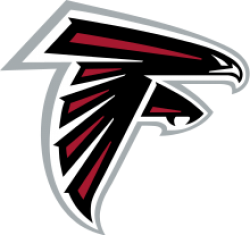
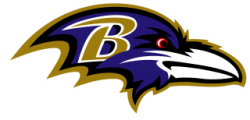
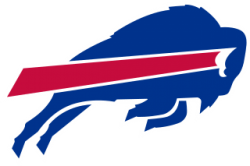
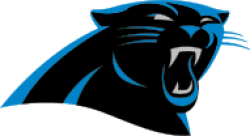
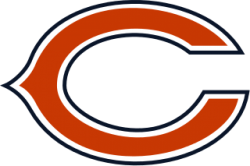
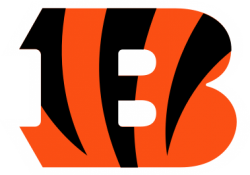
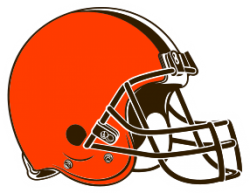
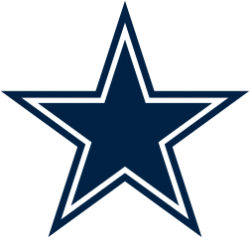
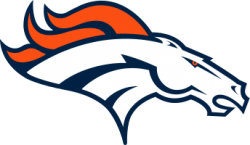
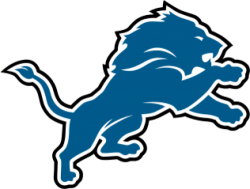
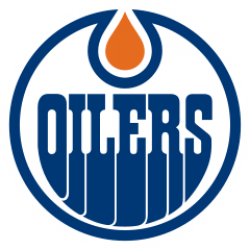
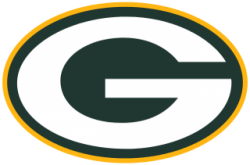
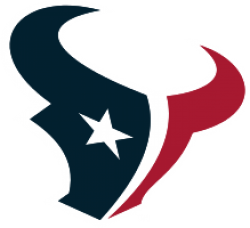
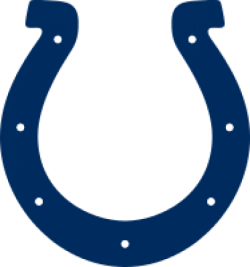
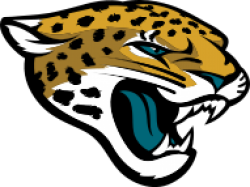
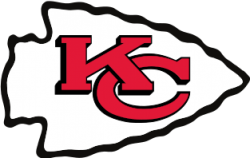
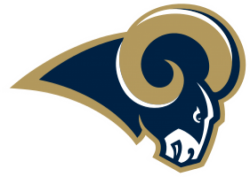
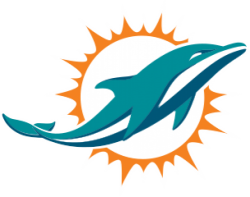
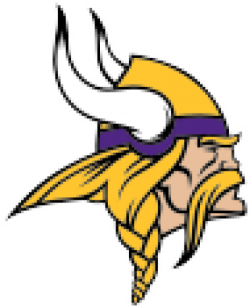
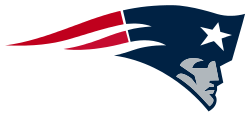
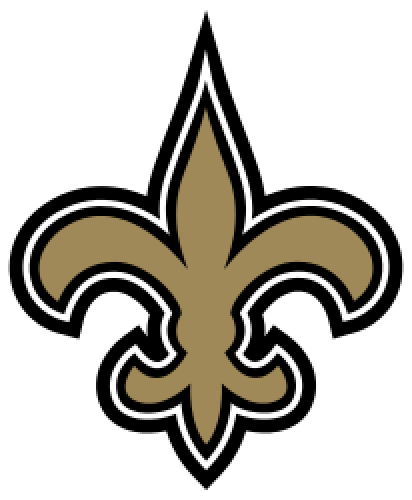
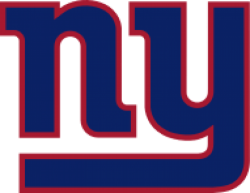
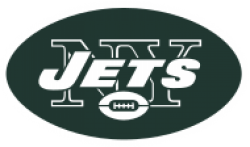
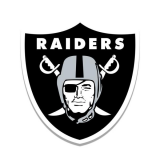
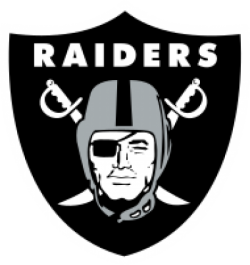
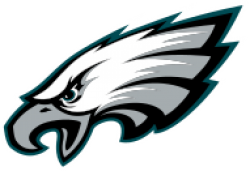
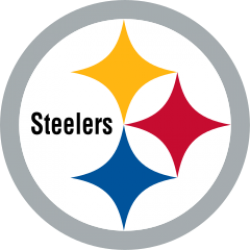
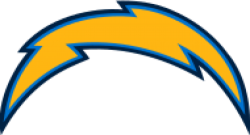
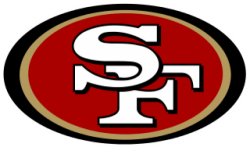
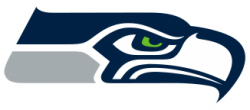
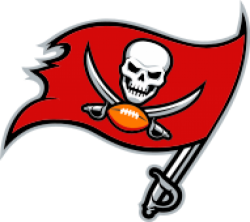
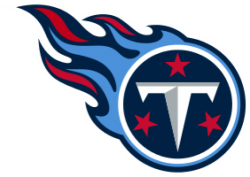
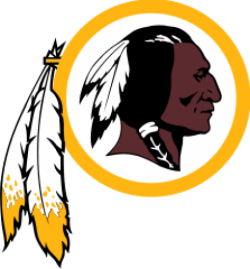
Have a discussion about the National Football League group with the community:
Report Comment
We're doing our best to make sure our content is useful, accurate and safe.
If by any chance you spot an inappropriate comment while navigating through our website please use this form to let us know, and we'll take care of it shortly.
Attachment
You need to be logged in to favorite.
Log In